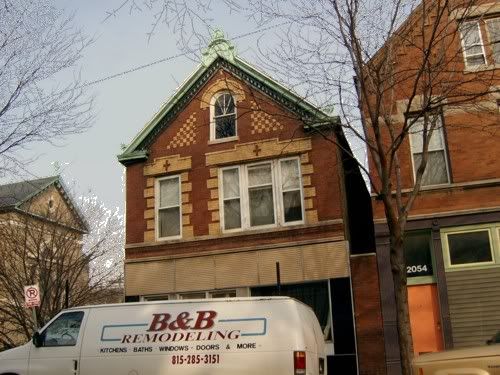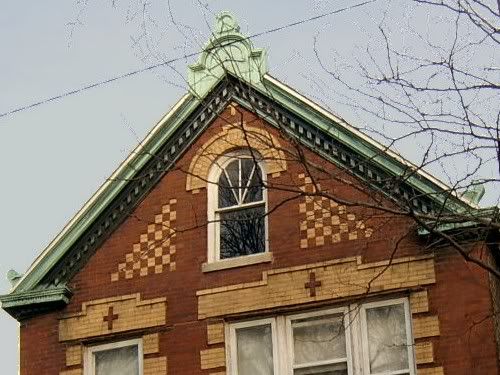I can’t do it.
I can’t root for the White Sox. Not yet, anyway.
I know the arguments on the other side: they’re the best hope for a title-starved town, while Boston has already won their Series at last. And the White Sox are probably the better all-around team, so in some sense they “deserve” to win.
But I just don’t care. And I think a lot of people around town are having the same experience. If you have been watching the media recently, you’d thing Chicago has been swept with a wave of Sox fever, but it’s just not true. Most Chicagoans regard the success or failure of their redheaded stepchild baseball team as irrelevant to their own happiness and well-being. And why should they?
For that matter, why should they care about any sports team? I grew up with baseball, more or less. As we bounced from city to city in my youth, we never really stayed faithful to a baseball team, although my father continued, mostly fruitlessly, to root for the Chicago Bears, which taught me something about humility and identification with the underdog. But when we moved to the Cincinnati area when I was, my father embraced the community wholeheartedly for some reason, and soon we were all pulling for the Bengals and the Reds, two teams that were much better back then than they have been recently.
Summer vacation in those days was embodied by the Reds game on the radio, my father grilling spareribs on the back porch. And, of course, the inevitable end-of-season letdown. I didn’t care that much about the team either way, but trips to Riverfront Coliseum were a treat, what with the junk food, the crowds, and the cool skybridge connecting my father’s office building with the ballpark. That ugly, ugly ballpark has since been replaced by a newer, more intimate field, but I can still see the raw concrete and smell the crowd. In 1990, the Reds led the division from wire to wire and rolled on to the Series. I was too busy starting college, falling in love and getting political to pay too much attention to late season baseball, but I did catch most of the Reds’ four game sweep in the basement of a frat house that was trying to recruit me by plying me with free beer.
A few years later came the strike – the World Series cancelled over a labor dispute? Players and owners both became warring tribes of annoying rich people who cared more about getting richer than they did about the game or the fans. Why did we care about those people anyway? In and of itself baseball is a sublime and beautiful thing, but I’d always been suspicious of fan identification – if you’re not on the team yourself, why does it matter to you which team wins? Most fans are just “rooting for laundry” anyway – backing whoever wears the uniform, not because of who they are, but because of the name of the city scrawled on their jersey (and teams should play for cities, dammit, not states. None of this “Utah,” “Texas,” “Florida” or “Arizona” crap. Not to mention “New England.”) The strike brought this suspicion home to roost. These people didn’t care about us. What fools we were to care about them. I don’t think I watched a single game for the next five years. I ignored the dominance of the evil corporate Yankees in the post-strike era, only paying attention for the Indians’ brief, futile title run, and then only because my ex-girlfriend’s family were such big fans, I sort of hoped on their behalf that the would win. But the Indians, another of the great, hexed teams, ended up losing (Besides the Curse of the Bambino, there is of course Sam Sianis’ goat keeping the Cubs down, the Indians were cursed by the members of the American Indian Movement over their offensive mascot, Chief Wahoo, and of course the White Sox haven’t won since the Black Sox Scandal of 1919, in which the team threw the Series after being paid off by gamblers.)
Then came the post-9/11 era, and the Idiot Mob’s determination to circle their wagons as a response to the attacks. Not only did they decide to rally around the flag and “God Bless America,” (Irving Berlin! So much catchier than the official anthem), they rallied around their loathsome President, and more shocking still, around the New York Yankees. Now I love New York as much as anybody and more than most, and I was deeply affected and horrified by what had happened. But I’m not going to root for the Evil Empire. The Fightin’ Plutocrats are a travesty, an offense against fair play and competition. A $200 million dollar stacked deck. The attempt of a billionaire madman’s ego to buy the championship year after year after year. They were going for their 27th title in 97 tries, and almost the whole country was rallying behind them.
Not me, baby. George Steinbrenner does not need my support. I ended up getting behind a team I had never heard of, a team I swear hadn’t heard of the last time I paid any attention, the Arizona Diamondbacks. Did I mention how annoying I find it when they name teams after states or regions rather than towns? Still, the Diamondbacks were the last thing standing between the Evil Empire and world domination – and all they had were two pitchers named Kurt Schilling and Randy Johnson. I was hooked. They held on through a full seven games, and in the end they beat back the forces of darkness.
Since then, I care about baseball, especially our lovable losers of Lakeview, the Chicago Cubs. They may not always play well, but they play for us. The “
tax-hiking, government-expanding, latte-drinking, Sushi-eating, Volvo-driving, New York Times-reading, body-piercing, Hollywood-loving, left-wing freak show” we call Chicago. I think I never understood why people identify with a team before because I’ve never identified with a community. Now that I have a home, I care about it a great deal, and identify with it.
Which is why I can’t get excited about the White Sox. It’s nothing against the team, who are great at what they do. And Ozzie Guillen is always amusing when he tries to talk to the media. But the fans, well, they ain’t us. In fact, the White Sox fans seem to define themselves as “not Cubs fans.” Even now, in the postseason when the team has other teams to worry about, the fans are focused on the Cubs. On my trips to the Cell the past couple days I’ve seen T Shirts and chants of “Cubs suck.” Jokes about dropping friends who are Cubs and Red Sox fans off at the Man Hole, a bar in the predominantly gay neighborhood surrounding Wrigley field. They call us “wine drinkers,” even though wine is for sale at the Cell, while Wrigley sells only beer as far as I know. There’s a cultural fault line here, one that should be familiar to anyone who has read “What’s the Matter with Kansas.” But why should such a rift occur in sky-Blue Chicago, Illinois?
A glance around the Cell on game day reveals a very white crowd, my hulking but friendly tattooed Mexican neighbors for Game 1 aside. This light complexion is striking because the South Side of Chicago is 77% minority, a patchwork of African American and Latino neighborhoods interspersed with a shrinking number of white enclaves on the far Southeast and Southwest sides – and, of course, Chinatown. The Sox themselves are a mix of black and Latin players with a couple of Polish guys and some newcomers from Asia, not so different form the neighborhoods surrounding the ballpark. But the fans? In the stands, anyway, many of them seemed to be descended from the old Irish South Side, today living mostly in the south suburbs since their families abandoned the city in droves in the 70s and 80s rather than live next door to black people. There were a lot of handmade shamrock-adorned “Southside” posters in evidence, at any rate. “Southside” is a state of mind, I guess, a mythical place encompassing the lives and beliefs of neighborhoods throughout the South Side and south suburbs, an attitude more than a real place, a strange amalgam of what was and what might have been. From what I can tell from having lived and worked on the South Side, the actual population there is divided evenly between indifference, Sox fans and Cubs fans. But the real South Side is not the point. Bitterness towards the perceived elite is the point. It seems that regret and shame over what has happened to their communities and envy towards our more engaging lives can both but sublimated into anger and contempt directed at people like me. So we can’t get on a “Sox bandwagon” because we’re not invited. Anyway, as an ESPN radio announcer explained the other day, “there is no Sox bandwagon. That’s the whole point of the White Sox.” If y’all actually enjoy playing the role of ostracized, victimized loser, then more power to you.
This is exactly the kind of ‘false consciousness” that people use to keep themselves down. Compare this false populism of White Sox fans with the broad, community-based authentic populism of Red Sox fans. In the Red Sox cult, everyone from Maine farmers to Boston city slickers to blue collar guys from Lowell are bonded together in the shared experience of human suffering and loss. While the generations-long talk of a “curse” was pretty bogus, the game does teach something about suffering and struggle, inevitability and chance. While you can defy the odds for one day, or one play, in the end the game is about averages – winning percentages, batting averages, earned run averages – and a manager’s job is to line up the numbers just right. So year after year, fans hoped for a miracle, but year after year the numbers didn’t lie. Physics guides the ball, probability guides player performance, reaction inevitably follows action, and the Red Sox lost. Last year, when the finally deviated from the mean enough to win, they gave me something I didn’t know I could still feel – hope. Wonder, awe, and hope.
It’s kind of like my relationship to life, death, and faith. I know what goes up must come down. I know we are all born to die. I know that, over the long term, we are all doomed to war, disease, death. But part of me continues to hold out hope that maybe, somehow, there could be something else. If not immortality, then meaning. Participation in eternity. Hope.
So I can’t root for the White Sox. Not yet. I know they have the better team, the better pitching rotation, and are almost certain to get the one win out of three chances they need to advance to the ALCS. The numbers don’t lie, match the pitchers’ past performance against the hitters and you get a high probability of a Southside sweep. But I’m still hoping for a miracle.
Of course, if they do advance, I’ll be pulling for them against the Yankees next week. Because beating Team Evil is what baseball is all about.


